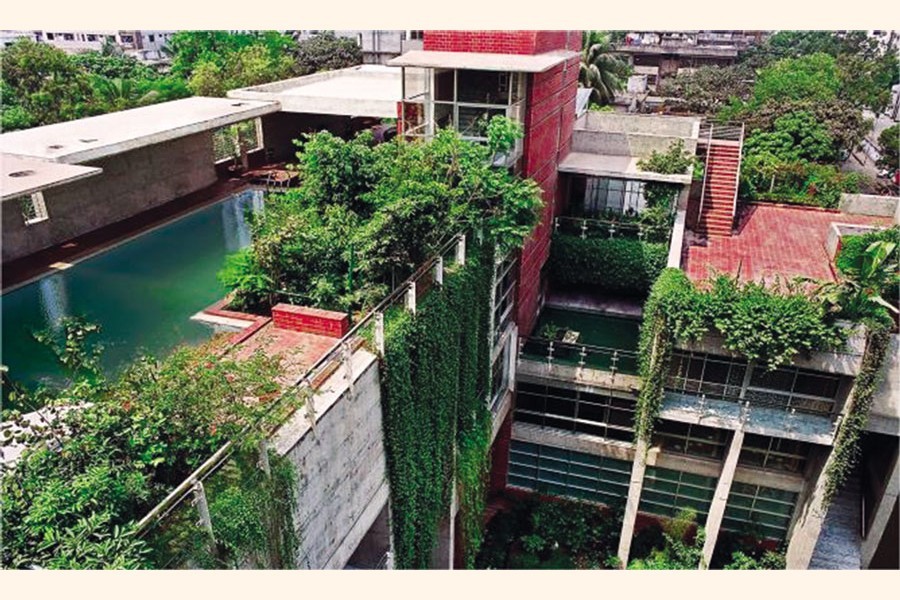Speakers at a programme on Thursday stressed the need for affordable green housing in Bangladesh - mainly to build housing sector's climate-resilience capacity.
The government may incorporate the issue in its policy to attract builders and banks to adopt the new housing style. The banks can launch green bonds to fund new and innovative building structures, they noted.
Bankers said they need to diversify funding towards green housing in order to reduce greenhouse gas emission.
Bangladesh is committed to cut 15 per cent emission by 2030, if global fund for green climate is available. Of this, 5.0 per cent reduction was targeted as unconditional.
The Policy Research Institute of Bangladesh (PRI) organised a seminar on the issue at its office in the city in partnership with the International Finance Corporation (IFC).
State Minister for Planning Professor Dr. Shamsul Alam joined the programme as the chief guest. IFC Chief Industry Specialist Prashant Kapoor presented the keynote paper.
Additional Secretary at Ministry of Environment, Forest and Climate Change Iqbal Abdullah Harun, and general manager of Sustainable Finance Department of Bangladesh Bank (BB) Khondkar Morshed Millat joined the programme, among others.
The paper presented on the day said low-income families can spend up to 25 per cent of their income on housing and utility costs.
Green housings can help save utility bills, as such homes come with solar panels that use sunlight to power the houses.
Apart from this, such homes are generally equipped with rainwater harvesting mechanism that helps to collect rainwater for future use.
The materials used in these buildings are primarily eco-friendly, which promote a healthier indoor and outdoor environment.
Besides, the resale value of green homes is expected to increase in near future.
But their construction cost is slightly higher (ranging from 1.0 per cent to 4.0 per cent) than those of traditional buildings, it added.
Dr. Alam in his speech said the government's future documents would incorporate such environment-friendly new concepts (like green housing).
He noted that the government has been working on the sustainable strategies, incorporated in its documents.
Mr Millat said the BB has been encouraging green financing for industries.
He opined that the BB should also diversify it for the interest of environment and long-term sustainability.
Mr. Kapoor highlighted different best practices of green housing across the globe.
He said the use of EDGE, a software-based measurement tool, has widened amid the Covid pandemic, signifying that the demand for such housing is on the rise.
Professionals consider green measures in early planning to minimise incremental cost. The builders can be benefited through faster sales of green houses.
Owners/buyers (of such houses) recognise operating benefits from reduced utility bills, improved comfort and increased resilience, he added.
Dr. Ahsan H Mansur, executive director at the PRI, said the banks can use green bond mechanism to raise funds, targeting an affordable housing market with new products, green mortgages, and green developer financing.
The government can recognise greater good to the economy, the society and the environment, and offer incentives in this regard, he added.
Affordable, green housing solutions are available across the industrialised and the developing countries.
Residential buildings account for 18 per cent of global energy-related CO2 emissions, whereas brick kilns and construction industries emit 10 per cent gas.


